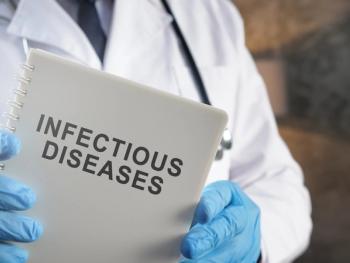
Staying Active During Shingles
Light exercise has both physical and emotional benefits
Physical activity has many proven benefits: it helps prevent or manage health issues, improves mood, boosts energy, enhances the body’s immune response, and promotes better sleep. But what about exercising during an illness like shingles; can it help? The answer is “yes,”—with some caveats.
Shingles, also known as herpes zoster (HZ), is an infection caused by the varicella zoster virus (VZV), which first causes chickenpox. The virus then lies dormant in the nervous system, usually for decades, before reactivating as shingles.
The primary symptom of the illness is a painful red blistering rash that can erupt just about anywhere on the body. Accompanying symptoms are fever, headache, tingling sensations on the skin, general fatigue, and sensitivity to light.
It can take up to 5 weeks for the rash to crust over and heal. Until it does, patients are advised to distance themselves from immunocompromised individuals, pregnant women, young children, and others who have not been vaccinated against or have had chickenpox so they do not become infected.
The physical symptoms and social isolation can add considerably to a shingles patient’s distress. Patients and their caregivers can take a number of simple steps to minimize discomfort and raise spirits. Light physical activity—including everyday pursuits and low-impact exercise—is one of them.
For patients who feel up to it, stress-reducing exercise is recommended. It’s important for them to assess their pain level on a scale of 0 to 10 before starting an activity, and to re-evaluate afterwards and back off if the pain level has increased. This is a time for gentle healing, not strenuous exercise.
The National Institute on Aging1 suggests simple activities such as stretching and walking. Bike riding is another good option. Tai chi, a traditional Chinese form of exercise involving controlled movement, reportedly not only increases immunity to VZV but is low-impact enough to be practiced during an outbreak.2 Yoga practitioners can continue their routine with modifications like avoiding poses that involve lying on areas of the body affected by the rash.
Those accustomed to intense cardiovascular workouts like long distance cycling or running that can irritate the rash and raise their body temperature should substitute less intense activities until the rash has scabbed over.
Wearing loose-fitting clothes made of natural fibers like cotton will allow for ventilation around the rash. Avoid physical activity that irritates the rash or results in a lot of sweating that could make it worse. Swimming, contact sports, and group exercise situations that could spread the virus should also be put on hold until after the rash heals.
As with all exercise, patients with shingles should listen to their body. If they feel worse after being active, it’s best to pull back and do something less taxing. Break up activity into manageable pieces. Three 10-minute sessions can be more beneficial than one 30-minute workout. And if those sessions can be done outside in fresh air, even better.
Balancing physical activity with adequate rest, healthy balanced meals, stress avoidance, and prescribed antibiotics will help the healing process go smoothly. To avoid a recurrence of shingles, get vaccinated. Shingrix (recombinant zoster vaccine) is the only HZ vaccine available. It is over 90% effective in preventing shingles in adults 50 years and older.3
References
- Shingles. National Institute on Aging. Reviewed October 12, 2021. Accessed April 15, 2022.
https://www.nia.nih.gov/health/shingles#coping - Tai chi boosts immunity to shingles virus in older adults, NIH-sponsored study reports. News release. National Institutes of Health. April 6, 2007. Accessed April 15, 2022.
https://www.nih.gov/news-events/news-releases/tai-chi-boosts-immunity-shingles-virus-older-adults-nih-sponsored-study-reports - What everyone should know about the shingles vaccine (Shingrix). CDC. Reviewed January 24, 2022. Accessed April 15, 2022.
https://www.cdc.gov/vaccines/vpd/shingles/public/shingrix/index.html
Newsletter
Pharmacy practice is always changing. Stay ahead of the curve with the Drug Topics newsletter and get the latest drug information, industry trends, and patient care tips.





























































































































